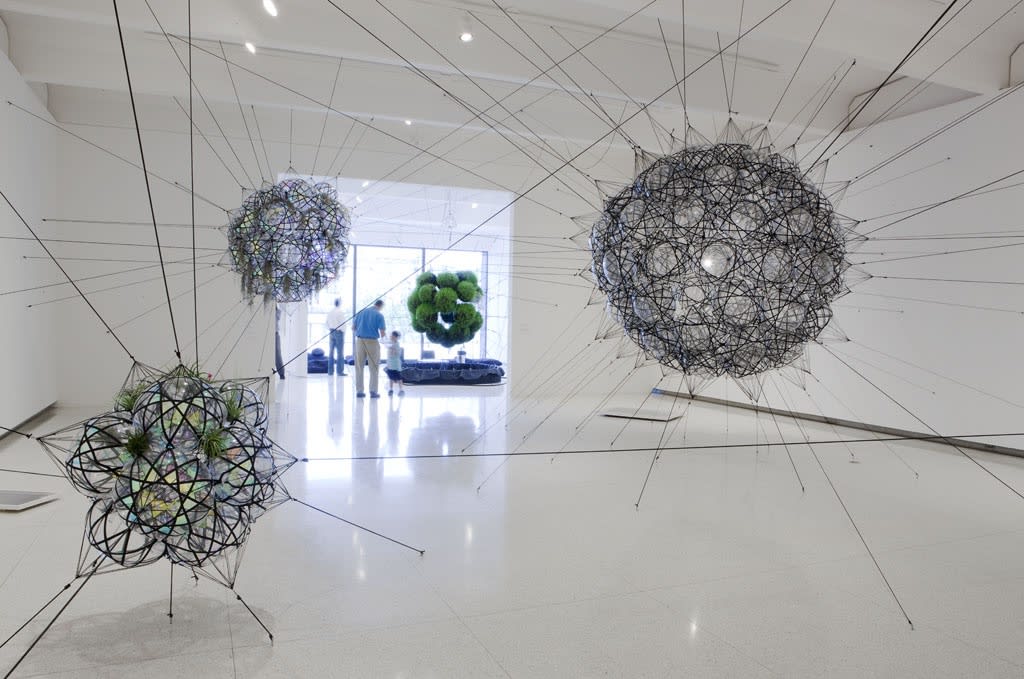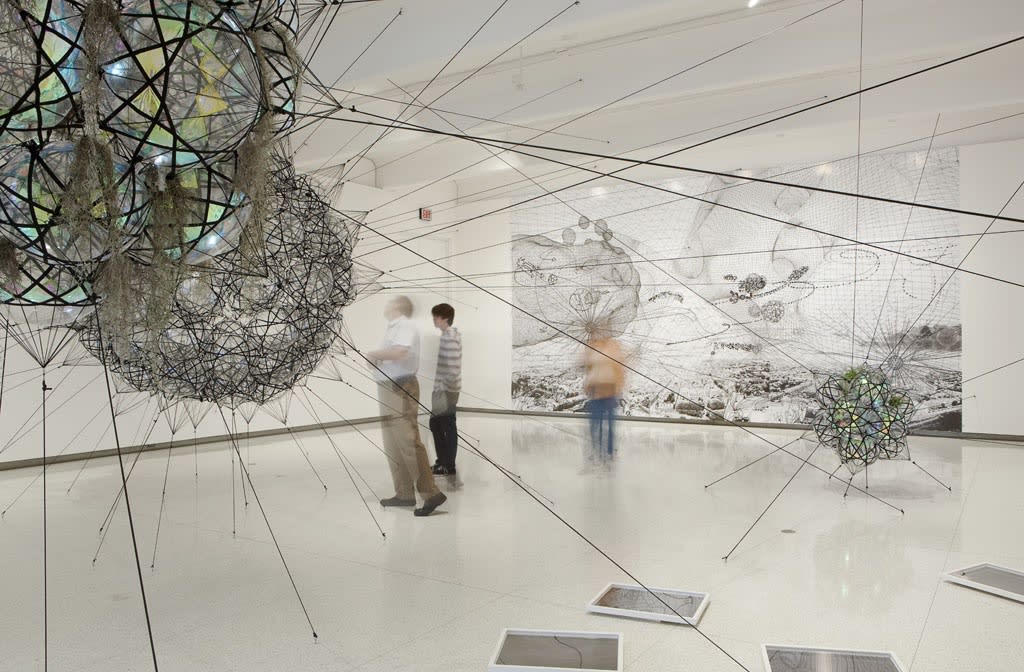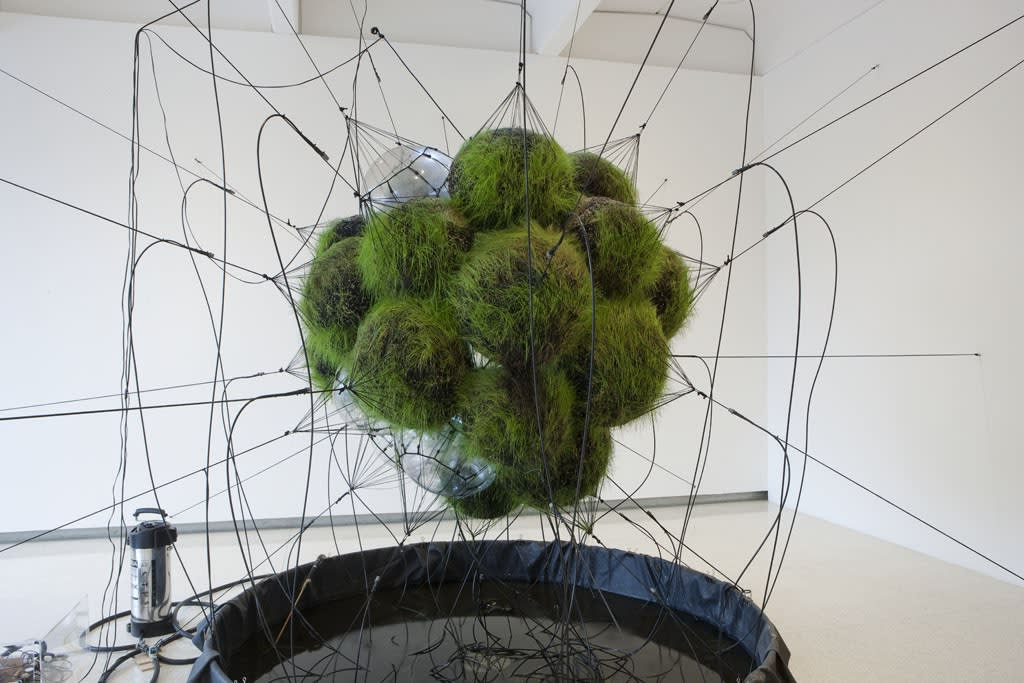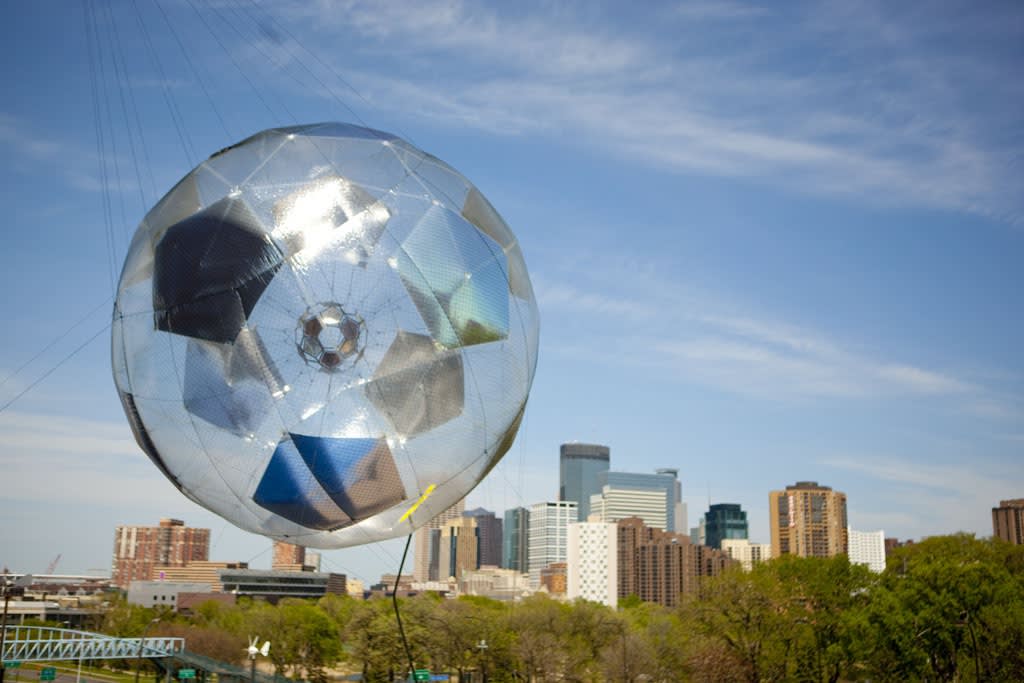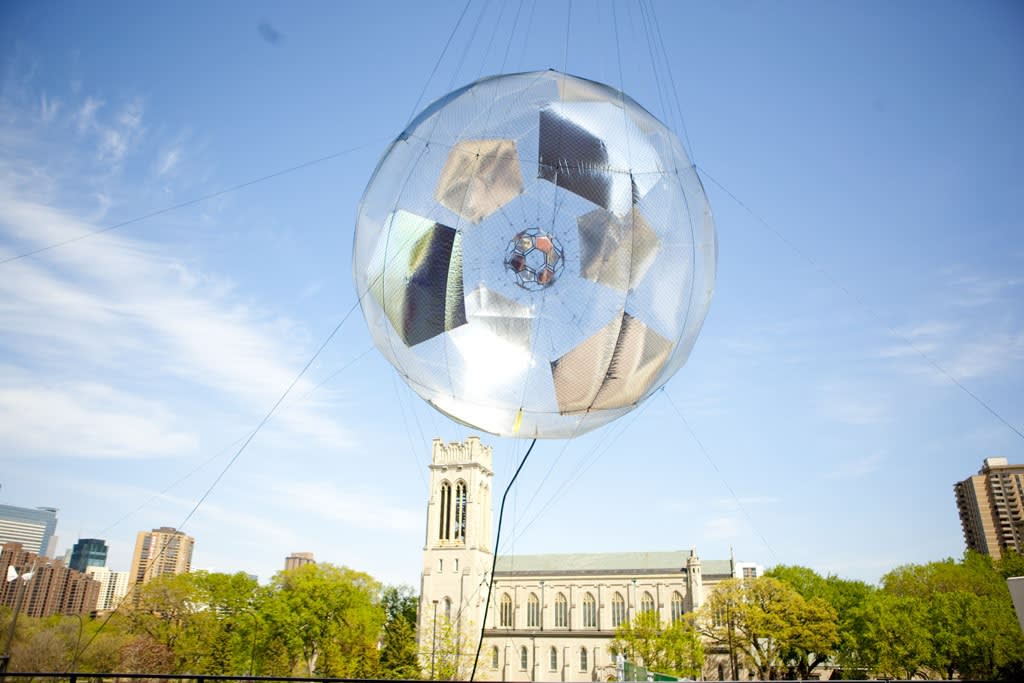Tomás Saraceno pushes the conventions of art and architecture and their capacities to invoke inventive solutions to complex questions about how we inhabit and coexist in the world. The Walker Art Center exhibition Tomás Saraceno: Lighter than Air, on view May 14 (from 5–9 pm) through August 30, showcases installations, sculptures, and photographs from 2003 to the present. Saraceno’s work was first seen at the Walker in the exhibition Brave New Worlds (2007), and in fall 2008, he brought his Museo aero solar—a continuously expanding solar-powered balloon made from hundreds of reused plastic bags—to the Walker for a residency that focused on a collective investigation to improve the balloon’s flight potential. Lighter than Air is his first large-scale museum presentation in the United States.
Saraceno is internationally recognized for his architectural proposals that frame the interdependencies of systems to ponder ecological questions beyond the natural world. Much of his work has involved conceiving environments that anticipate new socio-cultural platforms for interacting and experiencing our surroundings. “Saraceno is treating the gallery space as a biosphere, where works installed in close proximity sometimes connect through a network of cords and ropes to offer a concrete picture of what the world would look like if he was to design it,” says Walker associate curator Yasmil Raymond.
Following in the tradition of architects and theorists R. Buckminster Fuller, Peter Cook, Yona Friedman, and other visionaries, Saraceno looks to scientific principles and technological innovations to develop ideas for sustainable communities and new models for social interactions. Conceived by the artist as an entire organism, Lighter than Air closely integrates the works on view, formally and structurally, to render a network of relationships as well as illustrate the breadth of his practice. The exhibition’s design is inspired by the ecological theories championed by physicist Fritjof Capra, who argued that “Throughout the living world, we find systems nesting within other systems. And living systems also include communities of organisms. These may be social systems—a family, a school, a village—or ecosystems.” The exhibition integrates indoor and outdoor spaces throughout the Walker building, including staircases and hallways, with a network of electrical cables connected to solar panels oriented towards existing light sources. Electricity generated through this web of cables, receivers, and generators will cultivate the grass growing inside 32SW stay green/Flying Garden/Air-Port-City (2007), a self-sustainable greenhouse equipped with an irrigation system that waters a cluster of inflatable spheres.
The centerpiece of the exhibition is the sculpture Girasol (Turning Sun) (2009). Conceived for both the gallery and an adjacent outdoor terrace, it plays up the interdependencies between the sun, the wind, and technology. A wind turbine located on the terrace will power a video camera attached to a sunflower as it records intermittent views of the sky and the flower’s movement as it searches for sunlight. The captured images will be projected inside the gallery. Foregoing the practical and the plausible, Saraceno seeks to harness the power of imagination—his own and the viewer’s—to make a leap together into forms and vehicles that render the impossible possible.
Also on view will be photographs as well as a wall-sized drawing, Air-Port-City (2009), depicting the artist’s vision for an airborne metropolis floating above an earthbound city. Intrigued by the question of national borders, Saraceno has designed an urban setting where residents circumvent geopolitical boundaries, challenging notions of nationhood, land ownership, and borderlines. As the artist has said, “My idea for an Air-Port-City is to create platforms or habitable cells made up of cities that float in the air. These change form and join together like clouds. This freedom of movement is borrowed from the orderly structure of airports, and it allows for the creation of the first international city. . . . Air-Port-City is like a flying airport; you will be able to legally travel across the world . . . . This structure seeks to challenge today’s political, social, cultural, and military restrictions in an attempt to re-establish new concepts of synergy.”
Such a degree of autonomy is palpable in the sculpture Iridescent Planet (2009), created especially for the exhibition. A balloon anchored to the Walker’s terrace collects its energy from solar panels while depending on the force of the wind for its sustainability. Within this equilibrium, Saraceno strives to formulate systems in which the “cooperation” of individual parts—where one lament is contingent on the other—becomes a model for viewing the earth as a single organism.
While Saraceno’s series of inflatable sculptures and environments introduces many of the conceptual concerns echoed in his “flying cities” of the future, his experiments outside the studio are also central to his practice. These investigations, most recently in the form of handmade spheres, provide him with models of the internal mechanics of flying vehicles. In Museo aero solar (an ongoing project initiated in 2007), Saraceno embraces the idea of building a solar-powered balloon constructed of used plastic bags assembled with adhesive tape by hundreds of volunteers across eight cities around the world, including Sharjah (United Arab Emirates); Medellin (Colombia); Lyon (France); Rapperswil (Switzerland); Tirana (Albania); Ein Hawd (Israel); and most recently in Minneapolis while the artist was in residence at the Walker. Conceived in collaboration with writer and activist Alberto Pesavento during a visit to Isola Art Center in Milan, Museo aero solar developed out of a desire to employ a “do-it-yourself” approach towards technology, pursuing a fantastical goal, in Saraceno’s words, “to build the world’s largest flying museum.” The simplest of materials are made to contain energy in the spirit of Fuller’s motto “do more with less.”
